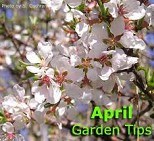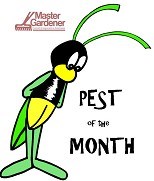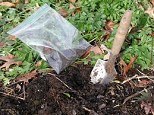Herbs make a great addition to a garden but they can also be grown indoors as year-round houseplants or just during the winter months to protect tender herbs such as rosemary (Rosmarinus officinalis) or basil (Ocimum basilicum). Herbs grown indoors offer many benefits including fragrant foliage, various foliage colors and shapes, a constant supply of herb leaves for cooking and continual leaf production after the outdoor growing season has ended. If you will be growing herbs for their leaves, make sure that enough are grown to supply ingredients for your favorite dishes.
Not all herbs will grow well indoors because their root systems require rather large containers. Examples of herbs that grow well indoors include: Chives (Album spp.), Horehound (Marrubium vulgare), and Winter savory (Satureja m on tana).
Examples of herbs that do not grow well in containers include: Horseradisyh (Armoracia rusticana), Fennel (Foeniculum vulgare), and Lovage (Levisticum officinale).
Requirements for growing herbs indoors
Herbs, like many houseplants have certain requirements to grow indoors. However, unlike common houseplants, herbs need conditions to be just right for optimum growth or their health will rapidly decline.
Most herbs need six hours of direct sunlight. Either place herbs in a sunny location, for example, near a window with a southern exposure, or place herbs six to twelve inches from two 40 watt, cool while fluorescent bulbs for 14 to 16 hours. Herbs that can tolerate indirect sunlight include mint (Menta spp.), bay (Laurus nobilis), rosemary and thyme ((thymus spp.). Lemon balm (Melissa officinalis) and tarragon (Artemisia dracunculus) will even grow well in very low light conditions. Herbs that are not exposed to preferred light conditions will become thin and spindly, produce smaller leaves and have a reduced aroma. If plants are grown on windowsills, it will be necessary to rotate pots often so that each side gets enough light for uniform growth.
Keep herbs in rooms that have at least a 65 to 70 degree day and 55 to 60 degree F night temperature regimes. Although most herbs can survive temperatures that are in the mod to l02 40s, others cannot: for example basil cannot survive temperatures lower than 50 degrees F.
Herbs also require a proper balance between a humid environment and adequate air circulation. Containers should be grouped together to create a humid environment, however, the closer containers are, the more likely air will not be able to circulate properly through the plants. Other options for increasing humidity include setting containers in a pan of moist pebbles or spraying plants with a misting bottle of water. Air circulation can be increased by slightly opening a window in an adjoining room but prevent drafts during the late spring, summer and fall months. A fan can be used to circulate air during the winter.
Herbs should be grown in containers with a drainage hole and in a potting mix that will aid water drainage. Water the potting mix when it starts to dry out. Certain herbs such as bay, marjoram and oregano (Origanum spp.) sage (Salvia officinalis), and thyme should dry out slightly between waterings. When growing rosemary in containers, never allow the potting mix to dry out completely.
Fertilize herbs with a low dose of water-soluble fertilizer every two weeks. Fertilizing herbs more often may negatively affect the herb’s aroma and taste (check the label for manufacturer’s instructions).
A soapy solution, one to two tablespoons of a mild soap such as dishwashing soap to one gallon of warm water can be used to control most insect pests. Spray infested plants with the solution once a week while pests are visible. Check the plants often to make sure that the soap solution is not discoloring or otherwise affecting the leaves. If this does happen, decrease the amount of soap used in the solution and discontinue use if the leaves still look discolored or abnormal. Always wash leaves off before you use them in a recipe.
Herbs should be repotted when roots grow through the drainage hole. The best time to repot is in the early spring so that herbs can grow into the new medium during the growing season. Perennial herbs can be repotted several times to accommodate new growth. Any herbs with a taproot such as borage (Borago officinalis) and dill (Anethium graveolens), should be grown in deep pots. Herbs with a more trailing form can be grown in hanging baskets.
Placing herbs outside during the water months
If you would like to place your herbs in containers outside during the late spring and summer months, acclimate them to higher light levels and intensities produced by the sun. Start by placing posts outdoors in partial shade and then slowly expose them to more and more light every few days. Continue to check the overall health of your plants to see if the fertilizer regiment or watering need to be increased. Also look for any sighs if insect infestation and damage.
Prepared by Kathleen M. Kelley, Assistant professor of consumer horticulture and Elsa S. Sanchez, Assistant professor of horticultural systems management, Penn State College of Agricultural Science, Department of Horticulture




